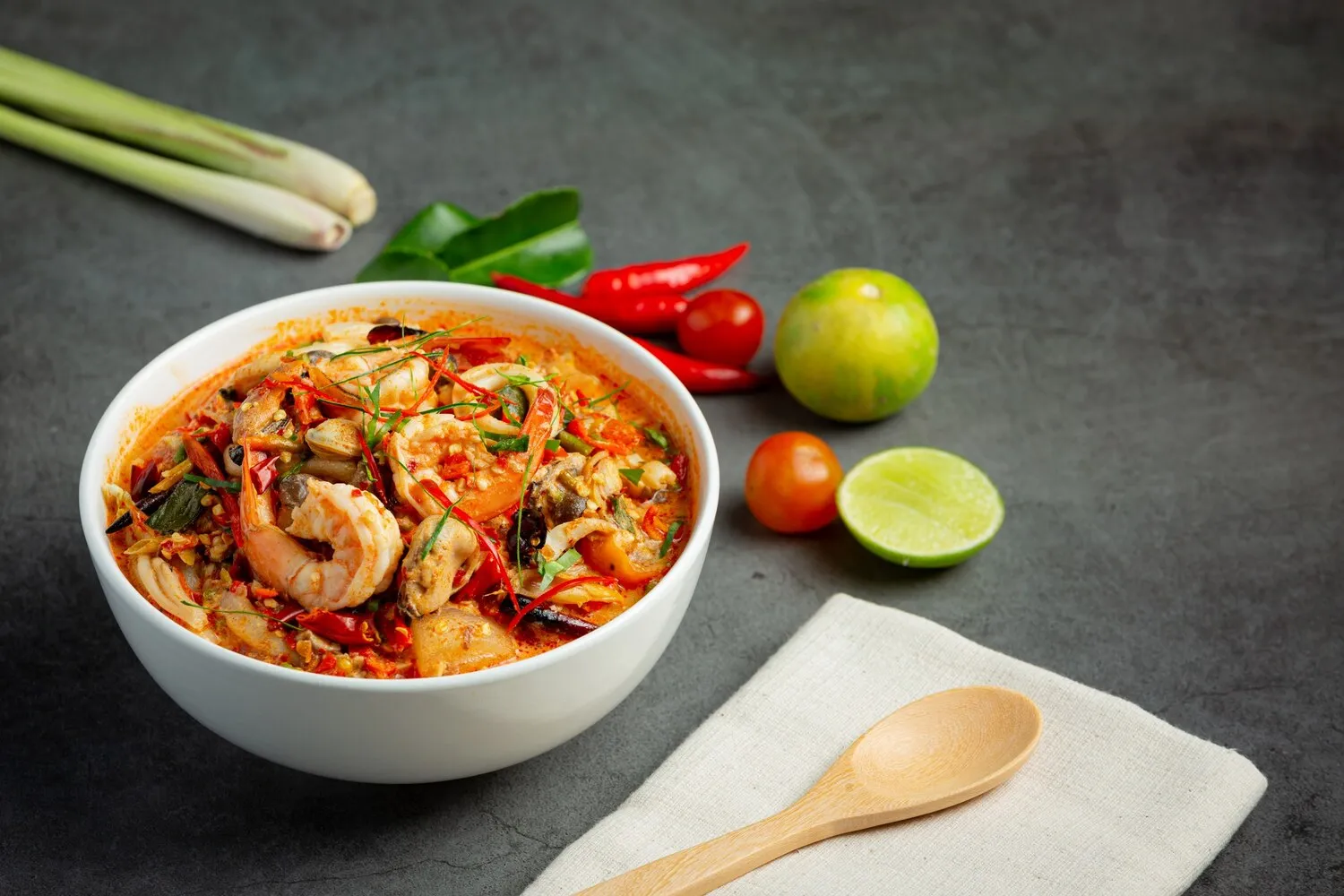
Thukpa
Noodle soup with vegetables and meat (chicken, pork, beef, vegetable or vegan)
Nutrition Facts
* The % Daily Value (DV) tells you how much a nutrient in a serving of food contributes to a daily diet. 2,000 calories a day is used for general nutrition advice.
Thukpa's origins trace back to Tibet, influenced by the culinary traditions of the Himalayan region. It is believed to have evolved as a staple food, particularly in colder climates where a warm and nourishing soup was essential. Over time, variations spread throughout the Himalayan region, including Nepal, Bhutan, and parts of India.
Thukpa holds significant cultural importance in Tibetan and Himalayan communities, serving as a staple food and a symbol of hospitality.
Communal Meal
Thukpa is often enjoyed as a communal meal, bringing families and communities together, particularly during festive occasions or gatherings.
Warmth and Nourishment
In the harsh Himalayan climate, thukpa is valued for its warming and nourishing properties, providing essential sustenance during cold weather.
Adaptability
The dish's adaptability to different ingredients and dietary preferences reflects the resourcefulness and adaptability of the people in the region.
Thukpa offers a savory and comforting flavor profile, primarily derived from its rich broth, noodles, and a blend of spices.
The flavor base comes from a hearty broth, typically made with meat bones (chicken, beef, or mutton) or vegetables for a vegetarian/vegan version. This broth is then infused with spices like ginger, garlic, chili, cumin, coriander, and turmeric, creating a warm and aromatic foundation. The noodles provide a chewy texture, while added vegetables like cabbage, carrots, onions, and bell peppers contribute sweetness and earthiness. Meat or tofu adds umami and protein. The overall flavor is a balance of savory, spicy, and slightly sweet notes.
Broth is Key
Start with a flavorful and well-seasoned broth. Simmering bones for an extended period will yield a richer, more complex flavor.
Noodle Choice
Experiment with different types of noodles to find your preference. Hand-pulled noodles offer a unique texture, but dried noodles work well too.
Spice Level
Adjust the spice level to your taste. Add chili oil or fresh chilies for extra heat.
Fresh Ingredients
Using fresh vegetables and herbs will significantly improve the flavor and aroma of your thukpa.
Explore additional Soup dishes and restaurants
Explore SoupDiscover top dining spots and culinary experiences in Georgetown.
Explore GeorgetownLearn more about the food culture, restaurant scene, and culinary heritage of Canada.
Explore Canada